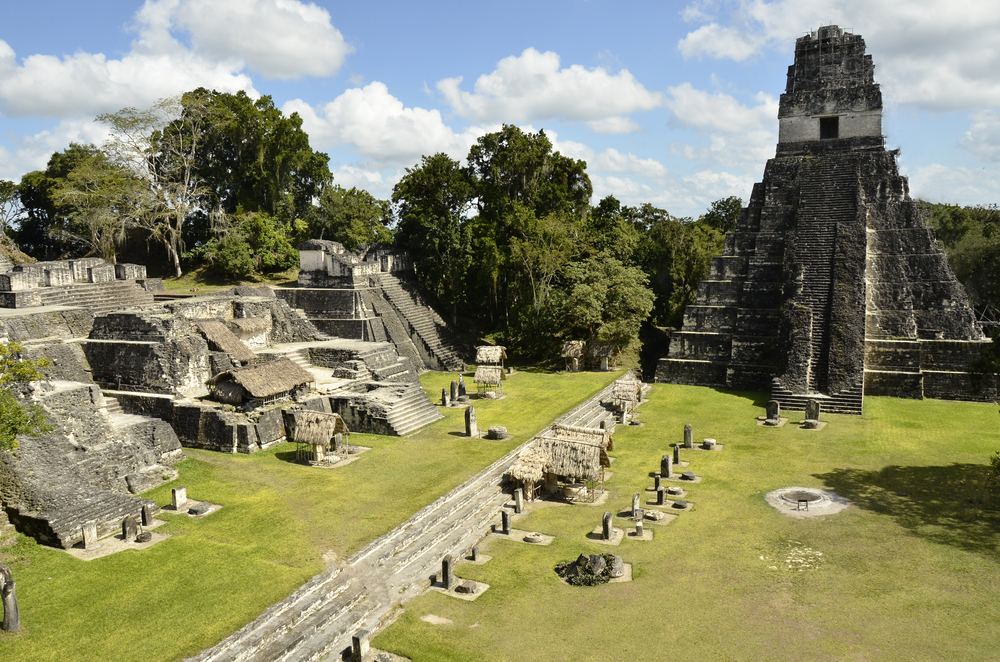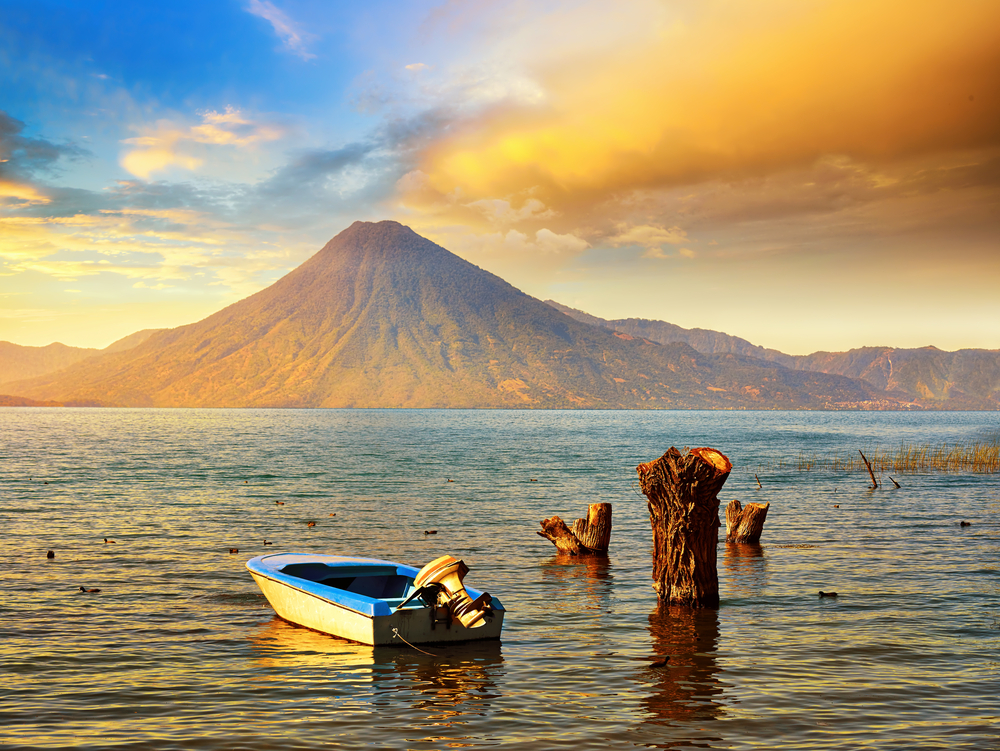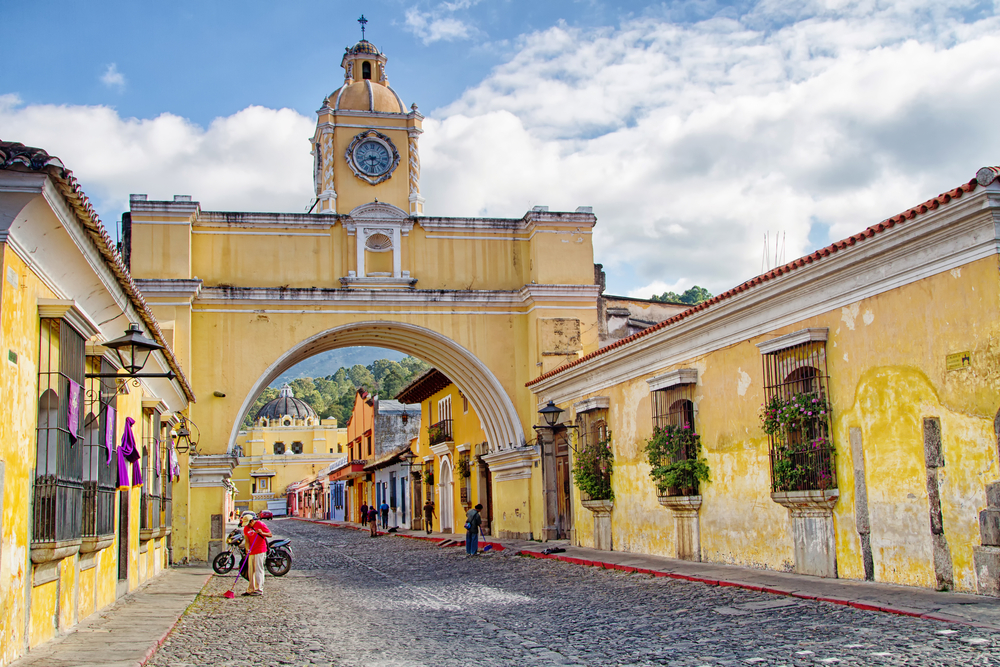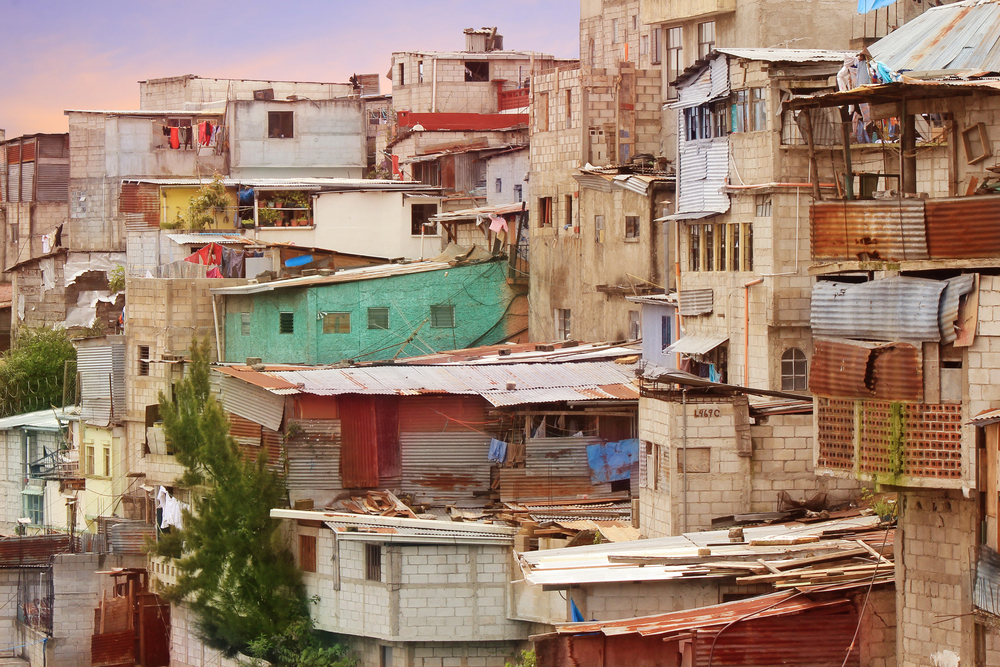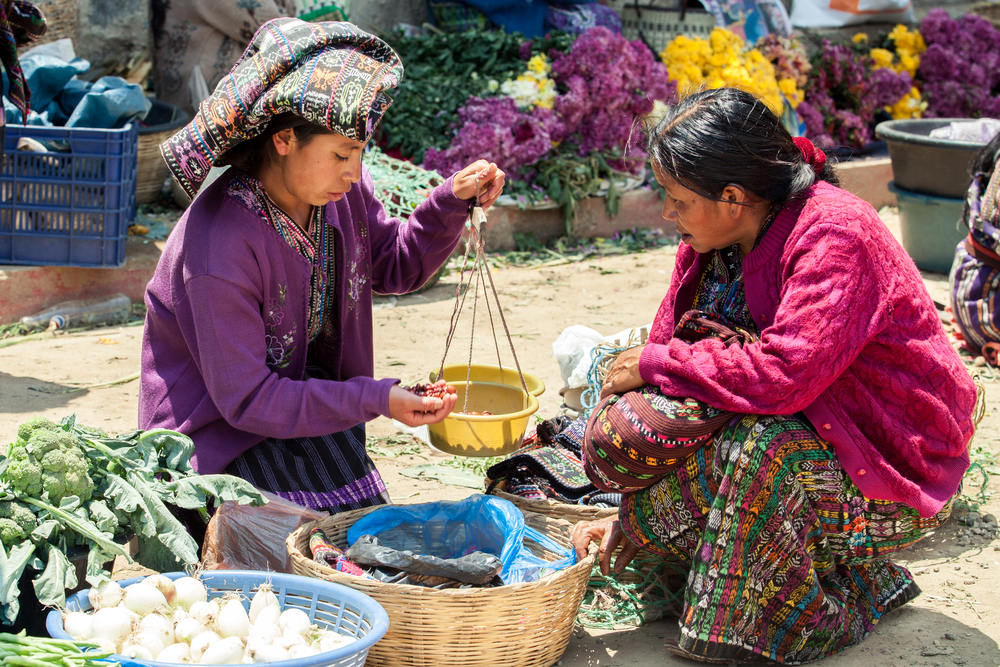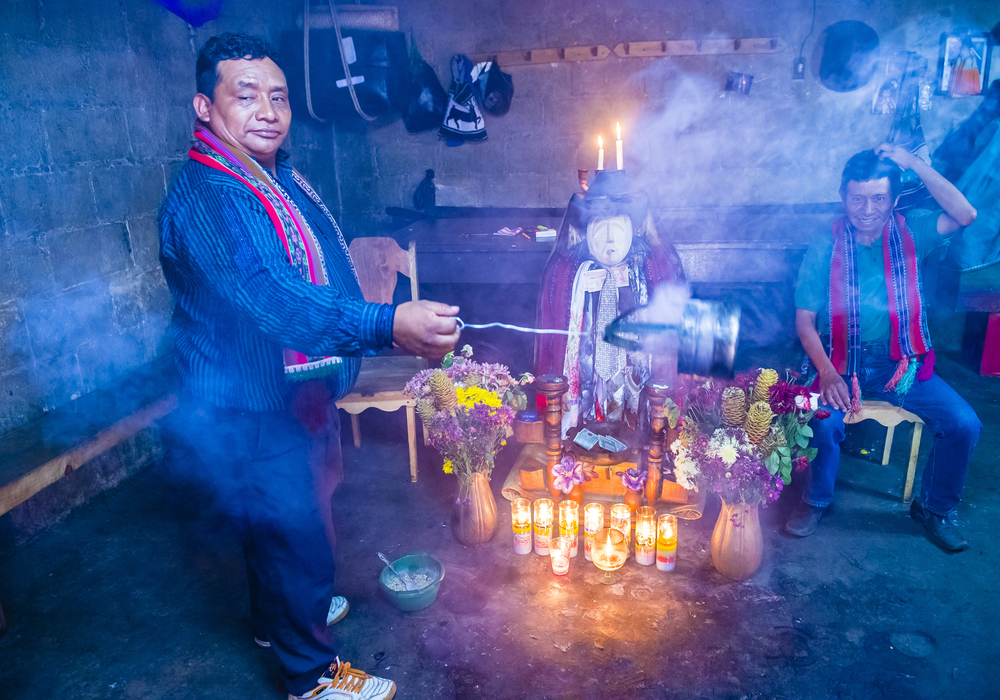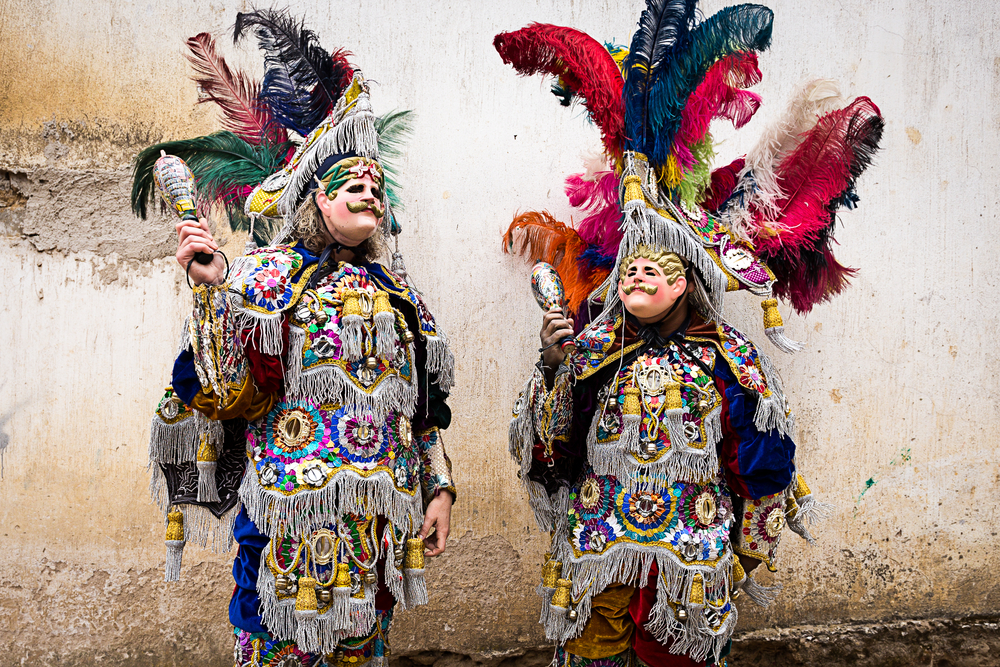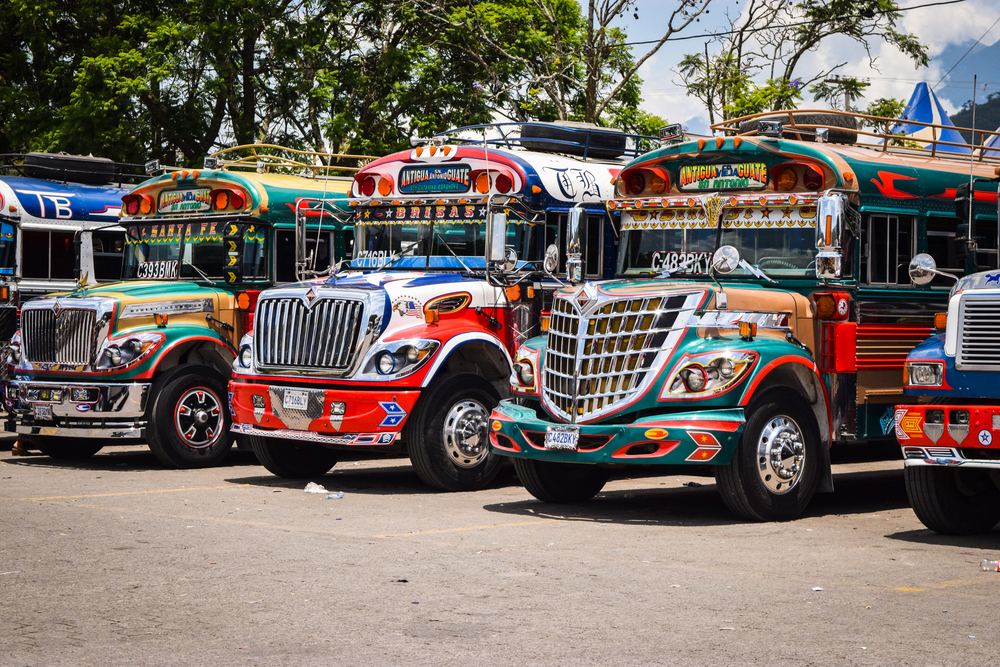How to Use This Curriculum
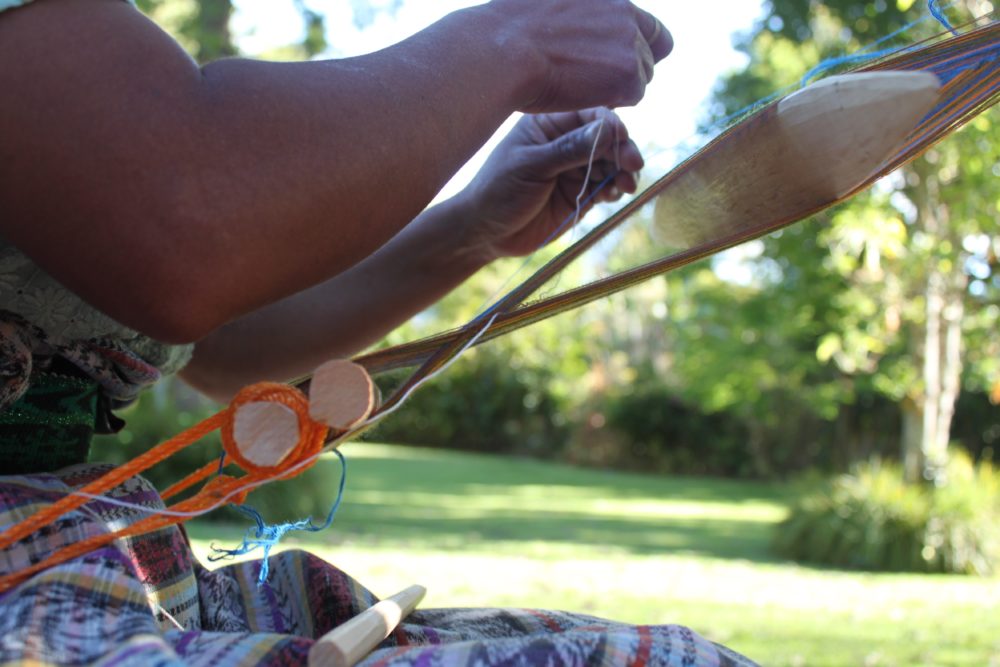
First rule: There are no rules. These resources are completely free and at your disposal. Use as much, or as little, as you want. Study casually, or work to create a portfolio of academic work that will blow the socks off of the educational establishment.
Feel free to adapt the materials for your own purposes. We expect families, business people, backpackers, college students, high school kids, middle aged vacationers, and retirees who are on a late life adventure to take these materials and run with them. We’d be very happy for teachers or travel group leaders to add these materials to their study abroad packets as well.
The nature of open source is collaboration, so please feel free to contribute when you become aware of resources we haven’t listed, or you have project ideas that we haven’t developed. Send us your work and inspire others to reach higher and deeper as they travel!
Our goal with this project is to inspire adventure and further education through experiential learning around the world. Please send us a note and let us know how you used these resources!

Buffet Style Learning
Does the menu look overwhelming? Looking for a formula to use as a skeleton for your studies in Guatemala?
Choose:
- Two books
- Two films
- Three articles
- One Problem & Solution or Project Option
- One Cultural Assignment
Table of Contents
- Books
- Films
- Articles
- Organizations
- Academic Assignments
- Problems & Solutions
- Cultural Assignments
- Create Your Own Coursework
Book Recommendations
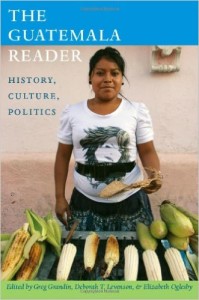 The Guatemala Reader
The Guatemala Reader
by Greg Grandin, Deborah T. Levenson & Elizabeth Oglesby
This reader brings together more than 200 texts and images in a broad introduction to Guatemala’s history, culture, and politics. In choosing the selections, the editors sought to avoid representing the country only in terms of its long experience of conflict, racism, and violence. And so, while offering many perspectives on that violence, this anthology portrays Guatemala as a real place where people experience joys and sorrows that cannot be reduced to the contretemps of resistance and repression. It includes not only the opinions of politicians, activists, and scholars, but also poems, songs, plays, jokes, novels, short stories, recipes, art, and photographs that capture the diversity of everyday life in Guatemala.
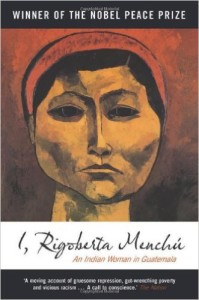 I, Rigoberta Menchu: An Indian Woman in Guatemala
I, Rigoberta Menchu: An Indian Woman in Guatemala
by Rigoberta Menchu
Now a global bestseller, the remarkable life of Rigoberta Menchú, a Guatemalan peasant woman, reflects on the experiences common to many Indian communities in Latin America. Menchú suffered gross injustice and hardship in her early life: her brother, father and mother were murdered by the Guatemalan military. She learned Spanish and turned to catechistic work as an expression of political revolt as well as religious commitment. Menchú vividly conveys the traditional beliefs of her community and her personal response to feminist and socialist ideas. Above all, these pages are illuminated by the enduring courage and passionate sense of justice of an extraordinary woman.
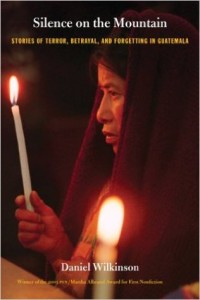 Silence on the Mountain: Stories of Terror, Betrayal and Forgetting in Guatemala
Silence on the Mountain: Stories of Terror, Betrayal and Forgetting in Guatemala
by Daniel Wilkinson
Silence on the Mountain is a virtuoso work of reporting and a masterfully plotted narrative tracing the history of Guatemala’s thirty-six-year internal war, a conflict that claimed the lives of some 200,000 people, the vast majority of whom died (or were “disappeared”) at the hands of the U.S.-backed military government. Written by Daniel Wilkinson, a young human rights worker, the story begins in 1993, when the author decides to investigate the arson of a coffee plantation’s manor house by a band of guerrillas.
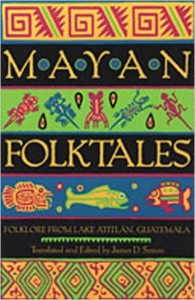 Mayan Folktales: Folklore from Lake Atitlan, Guatemala
Mayan Folktales: Folklore from Lake Atitlan, Guatemala
by J. D. Sexton
This collection of folklore offers a rich and lively panorama of Mayan mythic heritage. Here are everyday tales of village life; legends of witches, shamans, spiritualists, tricksters, and devils; fables of naguales, or persons who can change into animal forms; ribald stories of love and life; cautionary tales of strange and menacing neighbors and of the danger lurking within the human heart. These legends narrate origin and creation stories, explain the natural world, and reinforce cultural beliefs and values such as honesty, industriousness, sharing, fairness, and cleverness. Whether tragic or comic, fantastic or earthy, whimsical or profound, these tales capture the mystery, fragility, and power of the Mayan world.
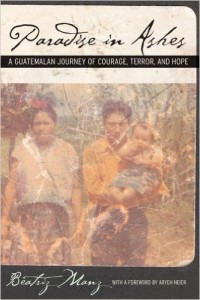 Paradise in Ashes: A Guatemalan Journey of Courage, Terror & Hope
Paradise in Ashes: A Guatemalan Journey of Courage, Terror & Hope
by Beatriz Manz
Paradise in Ashes is a deeply engaged and moving account of the violence and repression that defined the murderous Guatemalan civil war of the 1980s. In this compelling book, Beatriz Manz—an anthropologist who spent over two decades studying the Mayan highlands and remote rain forests of Guatemala—tells the story of the village of Santa María Tzejá, near the border with Mexico. Manz writes eloquently about Guatemala’s tortured history and shows how the story of this village—its birth, destruction, and rebirth—embodies the forces and conflicts that define the country today.
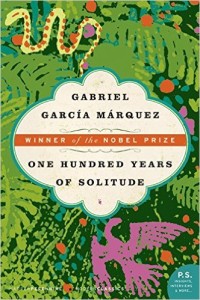 100 Years of Solitude
100 Years of Solitude
by Gabriel Garcia Marquez
One Hundred Years of Solitude tells the story of the rise and fall, birth and death of the mythical town of Macondo through the history of the Buenda family. Inventive, amusing, magnetic, sad, and alive with unforgettable men and women — brimming with truth, compassion, and a lyrical magic that strikes the soul — this novel is a masterpiece in the art of fiction.
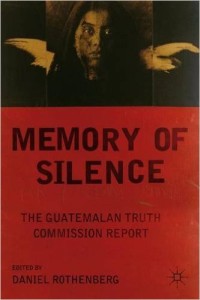 Guatemala: Memory of Silence
Guatemala: Memory of Silence
-Report of the Commission for Historical Clarification, Conclusions & Recommendations
This edited, one-volume version presents the first ever English translation of the report of The Guatemalan Commission for Historical Clarification (CEH), a truth commission that exposed the details of ‘la violenca,’ during which hundreds of massacres were committed in a scorched-earth campaign that displaced approximately one million people.
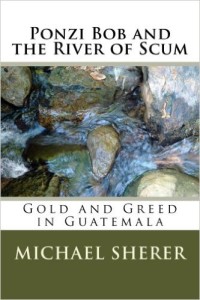 Ponzi Bob & The River of Scum
Ponzi Bob & The River of Scum
by Michael M. Sherer
A lighthearted look at the gold mining business in Guatemala, where scoundrels thrive and the stories never end.
Film Recommendations
Mayan Renaissance
Mayan Renaissance Dawn Engle (Director) is a feature length film which documents the glory of the ancient Maya civilization, the Spanish conquest in 1519, 500 years of oppression, and the courageous fight of the Maya to reclaim their voice and determine their own future, in Guatemala and throughout Central America.
When the Mountains Tremble
When Mountains Tremble Pamela Yates (Director) filmed in 1982 at the height of the Guatemalan Army’s repression against the Mayan indigenous people, has become a classic political documentary. It describes the struggle of the largely Indian peasantry against a heritage of state and foreign oppression. Centered on the experiences of Rigoberta Menchú, who later became a Nobel Peace laureate, the overall effect of the film is exhilarating. With clarity and energy it conveys the birth of a national and political awareness.
Cracking the Mayan Code
Cracking the Mayan Code David Lebrun (Director)-Documents the discovery of the meaning of Mayan heiroglyphs. Takes place at Palenque, MX but still relevant as it is the same people group.
Gold Fever
Gold Fever by Noam Chomsky tells the story of Goldcorp Inc arriving in a remote village in Guatemala. Soon follows blown up mountains, despoiled water supplies and broken promises of jobs. Dynamic and beautiful, this doc is a powerful look at the reality of gold miners digging in the 3rd world.
Living on One Dollar
Living on One Dollar by Livingonone.org, is a film and journey that follows our own experience living on $1 a day for two months in rural Guatemala.
We battle intense hunger, parasites and the realization that there are no easy answers, but find hope in the inspiring lives of our neighbors Rosa, a 20-year-old woman, and Chino, a 12-year-old boy.
While in Guatemala, we released short YouTube videos about the experience to help our friends learn alongside us in real time. The videos quickly received over 700,000 views, inspiring us to complete a feature-length film, Living on One Dollar, to mobilize others to help end extreme poverty.
To our amazement, the film has since won Best Documentary at the Sonoma International Film Festival, and received endorsements from Nobel Laureate Muhammad Yunus, USAID Administrator Rajiv Shah, and the Director of the Hunger Games, Gary Ross.
Health & Care in San Marcos
Health & Care in San Marcos by the Red Cross. Guatemala has some of the highest infant and maternal mortality rates in Latin American, a rate which increases significantly among the rural indigenous populations. As such, the Guatemalan Red Cross has identified maternal and child health as a priority area of work.
One of the areas where the GRC’s Maternal and Child Health program is currently being carried out is the western Department of San Marcos, with the support of the Norwegian Red Cross. The branch volunteers help to organize the women of the communities in support groups, to help each other learn about good practices relating to feeding and nutrition, prevention of illness, prenatal control, and the healthy development of children. Community health committees are formed and meet regularly to analyse the health situation of the community and to take actions to make improvements. The Guatemalan Red Cross also works with men and youth to talk about other health issues such as sexual health, rights, and family planning.
Terrace Farming in Santa Catarina
Terrace Farming in Santa Catarina Hobo Traveler shares his conversation with a farmer near Lago de Atitlan.
Children Living in the Guatemala City Dump: Children of the 4th World
Children Living in the Guatemala City Dump: Children of the 4th World by PBS is an Emmy winning 60 minute documentary highlighting the plight of children living in the dump in Guatemala City.
Guatemala: Too Young to Wed
Guatemala: Too Young to Wed by Oratechsalve follows the stories of young girls, in Guatemala, where it’s legal for a girl to marry as young as 14 — though many are married far younger than that. The result: Many girls marry men far older than themselves and become mothers long before they are physically and emotionally ready.
children living in the dump in Guatemala City.
The Frightening Legacy of the US Syphilis Experiments in Guatemala
The Frightening Legacy of the US Syphilis Experiments in Guatemala by Journeyman Pictures, tells the stories of soldiers, prostitutes, the mentally ill and even orphaned children; no one was safe from the American government’s decision to deliberately infect them with syphilis. The costs are still being felt today in Guatemala as the infected and their descendants, who have inherited the disease, all bear the painful scars of those experiments. Dr Cutler moved his base when he was banned from practicing in the States, after watching the effects of syphilis on African-American men who had no idea they were infected. Treating the disease “would interfere with the study”, Cutler said. All are victims of a “serious crime” says the lawyer pressing a lawsuit against the US government on behalf of the Guatemalans. Obama’s apology for this atrocity is a start but it isn’t enough to mend the ruined lives of the surviving human guinea pigs.
Article Recommendations
Battling Organized Crime in Guatemala
Why it Took a UN Commission to Bring Down Corruption in Guatemala
Demanding Women’s Human Rights in Guatemala
Why Guatemala is One of the Worst Places in the World to be a Child
Where Are the Children? On Undocumented Migration- New Yorker
Girls Aged 10 Having Babies: The Shocking Truth of Guatemala’s Child Pregnancy Shame
Indigenous Girls in Guatemala Break the Cycle of Poverty
Ground Swell International: Guatemala
Guatemalan Campesinos Embrace Ancestral Farming Practices to Prevent Migration
Organizations to Investigate
MUIXIL-Madre.org Women’s rights & empowerment
Cooperative for Education Creating sustainable education solutions for rural Guatemala
Konojel Addressing chronic malnutrition and women’s empowerment
Ground Swell International Addressing rural agriculture
Project Options
For each of these we will suggest several possibilities within each general heading, and then leave it open for a student to tackle some other interesting subheading that they would like to pursue:
Research and write about an aspect of the history, politics or culture (source books, individual experiences, site visits)
Civil War in Guatemala
Visiting the towns where it took place, current events including the prosecution of Rios Montt, and the fact that the recently deposed President (Alejandro Maldonado) is one of the generals directly responsible for the genocide, while the current President (Jimmy Morales) denies that it ever took place.
Possible topics include:
- Why the genocide took place & political origins.
- The cultural divide between Ladino and Indiegneous Guatemalans.
- War crimes and prosecution.
- The “disapearings.”
- Crimes against women during the war.
- Reconstruction and recovery post war.
Pre-Colonial History
Who inhabited this part of the continent before the arrival of the Spanish? Study the people groups, and what is left of the civilizations in the form of ruins.
Visit the ruins in person if possible. Compare and contrast with ruin groups in other Latin American countries if this is part of your journey.
Corruption & the Anti-Corruption Movement in Guatemala
A study of the Sept. 2015 protests, resignation of the Vice President and subsequent restructuring of much of the government. A focus on the ways in which the political structure of the country has changed, since colonial times, through the revolution of the 1940s, during and after the Civil War as Guatemala works toward democracy.
The Political and Economic Situation of the Indigenous Guatemalans
A study of the economic realities of the Indigenous Mayan People in Guatemala. How do these realities affect their political involvement, or lack thereof. A study of the ways in which the system either helps them forward or holds them back.
An analysis of how political change, or control, is effected at a grass roots level and through actions at the highest levels of power. Use first hand accounts, current events, and interviews to tell the story.
Gold Mining in Guatemala
Examine the impact of mining in the highlands of Guatemala. Study the history, the major players in the industry and the implications at the community level. Is gold mining in Guatemala improving industry and economy? Analyze the costs and benefits.
Economics: Investigate an Industry
Suggestions include but are not limited to:
- Coffee
- Bananas
- Cacao
- Sugar
- Vegetable agriculture
- Beef, chicken & other meat
- Textiles
- Manufacturing
Cover the process, exports, industry standards, human impact, community impact, working conditions, the influence of unions, or organizations for fair trade or other regulatory bodies. How does this industry contribute to Guatemala’s growth and economy?
Language
Examine the linguistic landscape of Guatemala. Spanish is the official language, but there are others. Study the ways in which this rich heritage of language has build the country and ways in which it holds it back. What is being done, on the one hand, to preserve this cultural heritage, and on the other hand to build the country forward through language?
Festivals in Guatemala
Guatemala is known for having some of the best and most interesting festivals in Latin America. The Kite Festival at Sumpango for the Day of the Dead, the flower carpet festivals in virtually every small town in the lead up to Semana Santa (Easter week) and Antigua’s over the top purple robed processions, and the saints day festivals in every village are a fascinating feast for the senses.
Attend festivals. Compare and contrast them with each other. Examine the religious, historical and cultural traditions that they arise from. Compare them similar celebrations you’ve experienced other places in the world, or within your own culture.
Art & Multi-Media Projects
Study the art of a particular region and produce a multi-media project related to the art history and modern expression.
Some options include:
- Mayan stone carving (from ancient ruins to jade in and around Antigua)
- Textiles: traditional backstrap looms vs. more modern weaving done on an industrial scale.
- Painting: from early painting at the ruin sites to modern expressions
- Music: Traditional music, colonial influence and modern trends
- Pottery: From the archeological excavations to modern creation
Profiles Of ….
Conduct a series of at least five interviews within a country.
The point of the exercise would be to get a well rounded view of what it is like to live in Guatemala from a variety of ages, incomes, employments and experiences. This could be conducted as video, or as text and the student would be expected to do an analysis of the experience/information.
People you might profile:
- Farmers
- Teachers
- Restaurant owners/workers
- Church officials
- Government officials
- Doctors or Nurses
- Street vendors
- Children
- Parents
- Drivers
- Artists or Musicians
- Laborers
- NGO workers
- Long term expats
Problems & Solutions
Study a current problem within the country and suggest/support a solution:
Malnutrition
Guatemala is #5 in the world for malnutrition, the four ahead of it are all war torn countries. Examine the causes of this, historically and currently. Examine the social and economic effects of malnutrition on the country and present a possible solution, OR examine the solutions already on the ground and find a way to support them. This would not only be an academic project, but a social action project as well.
Education
In Guatemala only 3 of every 10 children graduate from the 6th grade. Nearly 60% of the Indigenous People are illiterate. Guatemala ranks 164 of 194 countries on the literacy index. Less than 30% of rural Indigenous girls are enrolled in school. Study education in Guatemala, both public and private. Examine the socio-economic and geographical access.
Think about why the situation is so dire, who is most affected, and what the factors are that stand in the way of improvement. Examine projects on the ground (there are many) that are working to improve education and access to it. What is working, what isn’t? What can we learn from this as we seek to improve education in developing countries? Draw on your first hand experience to tell the story.
Poverty & Women
Explore the themes of poverty as it affects women. Tell a story based on a meaningful connection that you make in your journey. Interview women and girls. Research the statistical realities of growing up female in Guatemala as it applies to education, health, employment and economic advancement.
Is being female linked to poverty? Are there solutions to poverty that are uniquely applicable to women? What is a woman’s role in perpetuating, or ending the poverty cycle in Guatemala?
Violence
Violence is an ongoing problem in Guatemala. Examine the root causes of this. Examine the trends in violence. Who is most affected? Is Guatemala “safe” to travel in? Why, or why not? What was your experience? Examine the statistics and make comparisons within Latin America and the world at large.
Cultural Assignment Options
This is a list of ideas for projects that you can take and run with. In order to get credit for these projects there needs to be an “output” of some measurable sort. Common options would include a video project, a blog post, an essay, a published piece of work, or a certificate of some sort documenting the experience (in the case of a class taken).
Study the Language
Record the number of hours of language instruction along with verification from the language school. One week (minimum) is recommended. There are a number of reputable language schools in Antigua as well as in the villages around Lago de Atitlan that combine language study with cultural immersion.
Sample the Foods
Document the experience of trying at least five brand new foods during your stay (a fun photo essay? or video?) Take it up a notch and learn to cook something local. Enroll in actual cooking classes, or learn from a local friend. Find a way to document this experience.
Meaningful Connections
What is a meaningful interaction? You get to decide that. In general, it should be an interaction in which cultural exchange took place and you learned something. Often this will be with a local person; sometimes it will be with another traveler.
Sometimes these interactions look like very little on the outside but are totally life changing on the inside. Other times, they are rock your world amazing from every angle. It could be a meal shared, an afternoon’s excursion, a discussion that opens your eyes in some way, a self revelation that happened without any words exchanged at all.
Document this interaction and how it impacted you.
Take a Class
There are so many options available:
- Cooking
- Art
- Language
- Massage
- Music
- Permaculture
- Yoga
- Anything else you can find!
Procure some form of documentation from the class provider to document your experience. You might also create a video, or a piece of art, or write about what you learned and how you learned it.
Museum Visits
Save the ticket stubs and share something that you learned.
Volunteer
There are numerous volunteer opportunities available, both advertised on line and unadvertised locally. Look for them at a school, a social project, an NGO, teaching English, building project, or something entirely different.
Photos of work, or documentation from project leader are a couple of options for documenting this one. As is a write up of the organization, what they are doing and how you helped. Preferably this is more than one day.
Live Local
Get out of the hostel, rent a place in a local village, or do a homestay.
Photo essay or a blog description of why living local was different than living in a hostel. How did this experience change the economics of your stay? What did you learn about the way locals live? What challenged you? What would you do differently next time?
Work Stay
Through an organization like WWOOF, HelpX, or Workaway you can arrange for an opportunity to work in exchange for your room and board in a number of capacities, from farm labour to hospitality. Lots of students make use of these experiences to lower the cost of their travels, while at the same time learning valuable skills or “trying out” various career areas that interest them.
Request feedback in the form of a short evaluation that can be used later for a CV or reference
Public Transportation Project
Take as many types of public transportation as possible.
Challenge yourself to take every type of public transportation available while you are in Guatemala. One student, Rachael, managed to walk, take a boat taxi, tuk tuk, chicken bus, collectivo, taxi, pick up truck, and horse drawn carriage in a 36 hour period. Create a photo essay or videologue of your adventures. What did you learn?
Attend a Religious Observance
One way to learn more about a country or culture is to study the religious aspect of life. Attend a church service, visit a shrine, or an indigenous ritual. Visit a religious festival or event. Or, if you’re very lucky, score an invitation to a wedding or funeral for a window into the way that religious ritual is woven into the fabric of life. Compare and contrast this to your other experiences, at home and abroad. What did you learn about Guatemala or Guatemalans as a result of this experience? How did it make you feel? What did you learn about yourself?
How to Create Your Own Course Work
Ask
Learn to ask for what you want. If you meet someone interesting, ask them to teach you. Ask them for an interview. Ask to shadow them for a day or a week. You’ll be surprised at how eager people are to share what they know and teach when someone shows actual interest. Learn to ask questions. Learn to take social risks by putting yourself out there as a learner.
Plan
You have an idea or an interest. Something surprises you on your journey and all of a sudden you have a burning desire to know more. Plan your attack:
- Narrow your field of study to a particular question or topic.
- Compile resources: Look for teachers. Who knows what you need to know? Or who can you interview to learn more? Are there books or videos on the topic you’re interested in?
- Quantify it. How will you demonstrate what you have learned? A research paper, a video project, a photo essay, through art or music, a blog post, a published piece, an interview series, a mini documentary or do you have some other idea?
Produce
Produce a quality piece of academic work that reflects your experiential learning. The whole key to quantifying outside the box learning is to translate it into something that reflects the value of what you learned and how it contributed to your overall educational process.
Perhaps this will be as simple as a traditional research paper, depending on the depth and length of your study this could be as short as three pages or as long as a dissertation. Maybe you’ll produce a video for YouTube, or something grander, like a mini-documentary. Perhaps you’ll do something concrete instead, an art, or community action project and you’ll tell the story through a photo essay, or a series of blog posts. The possibilities are limited only by the resources you have at hand. Get creative. Think outside the box and truly experience your education.
Do You Have Anything to Add to This Resource Page?
We’re actively seeking to grow these resources in an open-source spirit. Please email jenn(at)bootsnall(dot)com with your edits or submissions of new information or materials.
Thank you!

